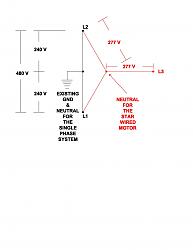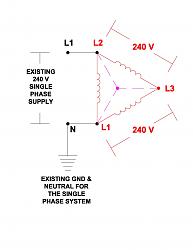"Originally Posted by old kodger
Rhengieer,
I thank you for your effort, but now you see what I mean when I say, in Australia most of the options to date are totally uneconomic, for instance, I need to power a 3 phase mig welder which is name-plated at 10 amps per phase which is about 7.1kw at 230 volts. If a 3hp transformer is likely to cost $450 US that's around $600 AU, and I might need two...$1200 plus freight, and as I mentioned before freight from the US to AU needs the surrender of ones first born, I would not be surprised to find that the freight exceeded the initial cost of the transformers. Also 3hp would woefully inadequate, I need at least 10 amps per phase, for a overload margin, maybe more.
So at a potential cost in excess of $2400, a second hand 3 phase generator is starting to look a lot more realistic.
I thank you for all your effort, and indeed to all the other contributors to this thread, but unless I can find a way to control a synchronous motor acting as a generator, I have two options:- buy a generator or attempt to rewire the welder to run on single phase. Incidentally, I'm informed by the manufacturers of the welder, that the configuration internally is actually three separate transformers feeding a bank of full wave bridges, so it could be possible.
If anyone is interested I'll keep you informed.
Rob."


 LinkBack URL
LinkBack URL About LinkBacks
About LinkBacks


 Reply With Quote
Reply With Quote







Bookmarks